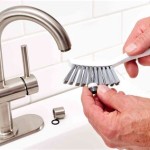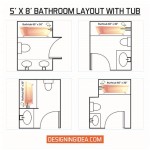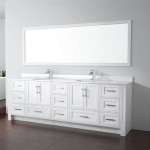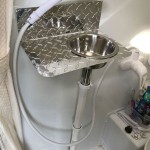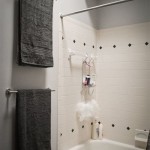What Do You Call A Bathroom Without A Bath?
The term "bathroom" is ubiquitous in the English language, serving as a general descriptor for a room dedicated to personal hygiene. However, the semantic connection to bathing, specifically the presence of a bathtub, raises a pertinent question: what is the appropriate terminology for a bathroom that lacks a bathtub? The answer, while seemingly simple, involves exploring nuances of architectural design, regional linguistic variations, and evolving plumbing technologies. The purpose of this article is to provide a comprehensive overview of terms used to describe bathrooms without bathtubs, focusing on their historical context, common usage, and subtle differences in meaning.
The evolution of the bathroom from a purely functional space to a more comfortable and aesthetically considered area has significantly influenced the terminology used to describe it. In earlier eras, the presence of a bathtub was almost definitional to what constituted a bathroom. The integration of showers, toilets, and sinks into a single space blurred this line, necessitating more specific terms to differentiate between bathrooms with and without bathing facilities. Understanding this historical shift is critical to appreciating the current linguistic landscape.
The prevalence of smaller living spaces, particularly in urban environments, has also contributed to the rise of bathrooms without bathtubs. Apartment buildings and condominiums often prioritize space efficiency, opting for shower stalls instead of full-sized tubs. This architectural trend has further solidified the need for clear and concise terminology to accurately describe these types of bathrooms. The following sections will delve into the most common alternatives to "bathroom" when referring to a space without a bathtub.
The Half Bath: A Study in Terminology
The term "half bath" is perhaps the most commonly encountered descriptor for a bathroom lacking a bathtub or shower. It typically consists of a toilet and a sink, providing the essential facilities for personal sanitation without including any bathing elements. The origin of the term "half bath" is rooted in the idea of a "full bath" containing all four essential fixtures: a toilet, a sink, a bathtub, and a shower. The absence of the bathtub and shower effectively reduces its functionality to half of a "full bath," hence the name.
However, the term "half bath" can sometimes be misleading, particularly when compared to other similar terms like "powder room" or "guest bath." While all three terms generally refer to bathrooms without bathtubs or showers, they often carry slightly different connotations regarding their location within a house and their intended use. "Half bath" is generally a more neutral and descriptive term, simply indicating the absence of bathing facilities. It is frequently used in real estate listings and architectural plans to accurately define the room's composition.
The term "half bath" is widely understood across different regions, making it a reliable and unambiguous way to communicate the absence of a bathtub or shower. Its simplicity and directness contribute to its popularity, ensuring that potential buyers or renters understand the composition of the bathroom in question. While more nuanced terms exist, "half bath" remains a staple in both informal and formal contexts for describing a bathroom with only a toilet and sink.
The Powder Room: Elegance and Functionality
The term "powder room" carries a distinct historical and social significance. It originally referred to a small room where people, particularly women, would powder their wigs or faces, a common practice in previous centuries. With the advent of indoor plumbing, the powder room gradually evolved into a small bathroom, typically located on the main floor of a house, that contained only a toilet and a sink. While the original purpose of powdering wigs has long been obsolete, the term has persisted, retaining its association with elegance and functionality.
The key distinction between a "powder room" and a "half bath" lies in their intended purpose and location. Powder rooms are generally designed for guests' use, providing a convenient and discreet space for personal hygiene without requiring them to venture into the more private areas of the house. They are often located near the entrance, living room, or dining room, making them easily accessible to visitors. In contrast, a "half bath" may be located anywhere in the house and is not necessarily designated for guest use.
The aesthetic design of a powder room often reflects its intended purpose as a guest bathroom. It is typically more elaborately decorated than a standard half bath, featuring decorative mirrors, elegant lighting fixtures, and upscale fixtures. The purpose is to create a welcoming and aesthetically pleasing space for guests, enhancing their overall experience within the house. The term "powder room" therefore communicates not only the absence of bathing facilities but also a certain level of sophistication and attention to detail.
The Shower Room: Explicitly Highlighting the Shower
The term "shower room" is perhaps the most straightforward and descriptive alternative to "bathroom" when specifically referring to a space containing a shower but not a bathtub. This term avoids any ambiguity about the presence or absence of specific bathing facilities, clearly indicating the availability of a shower. While less commonly used than "half bath" or "powder room," "shower room" is gaining popularity, particularly in modern architectural design and real estate marketing.
The advantage of using "shower room" lies in its specificity. It leaves no room for misinterpretation, unambiguously stating the presence of a shower and implicitly excluding a bathtub. This is particularly useful in situations where clarity is paramount, such as in building specifications, rental agreements, or renovation plans. The term is also increasingly used in regions where showers are more common than bathtubs, reflecting local preferences and architectural styles.
The design and functionality of a shower room can vary widely, ranging from basic shower stalls to elaborate walk-in showers with multiple showerheads and custom tiling. Regardless of the specific features, the defining characteristic of a shower room is the presence of a shower as the primary bathing facility. The term is increasingly used in contemporary homes and apartments, reflecting the growing preference for showers over bathtubs in certain segments of the population. While it may not be as widely known as other terms, "shower room" offers a precise and unambiguous way to describe a bathroom without a bathtub, emphasizing the availability of a shower.
Furthermore, the rise of accessible design and aging-in-place principles has led to an increased demand for shower rooms with features like grab bars, curbless showers, and adjustable showerheads. These features enhance safety and accessibility for individuals with mobility limitations, making shower rooms a preferred option in many residential settings. The term "shower room" clearly communicates the presence of a shower, which is often a key consideration for individuals seeking accessible and user-friendly bathroom facilities.
In conclusion, while many terms exist to describe bathrooms without bathtubs, the most appropriate term depends on the specific context and the intended audience. "Half bath" remains the most widely understood and generally applicable term, while "powder room" carries a connotation of elegance and guest use. "Shower room" offers the most precise description, explicitly highlighting the presence of a shower and implicitly excluding a bathtub. Understanding the nuances of these terms allows for clear and effective communication regarding bathroom design and functionality, avoiding potential misunderstandings and ensuring accurate representation in various contexts.

Powder Room Vs Bathroom What S The Difference

No Tub For The Master Bath Good Idea Or Regrettable Trend Between Naps On Porch

No Tub For The Master Bath Good Idea Or Regrettable Trend Between Naps On Porch

What Is A 3 4 Bath How It Diffe Than Half

Diffe Types Of Bathroom Layouts Forbes Home

Is A Walk In Shower Considered Full Bath Victoriaplum Com

A Guide To Materials And Finishes For Bathroom Design Cafe

What Is A Full Bath The 4 Parts That Make Up Bathroom

9 Modern Bathroom Ideas For A Stunning And Spa Like Look

Split Bathroom Design Ideas And Reveal
Related Posts

